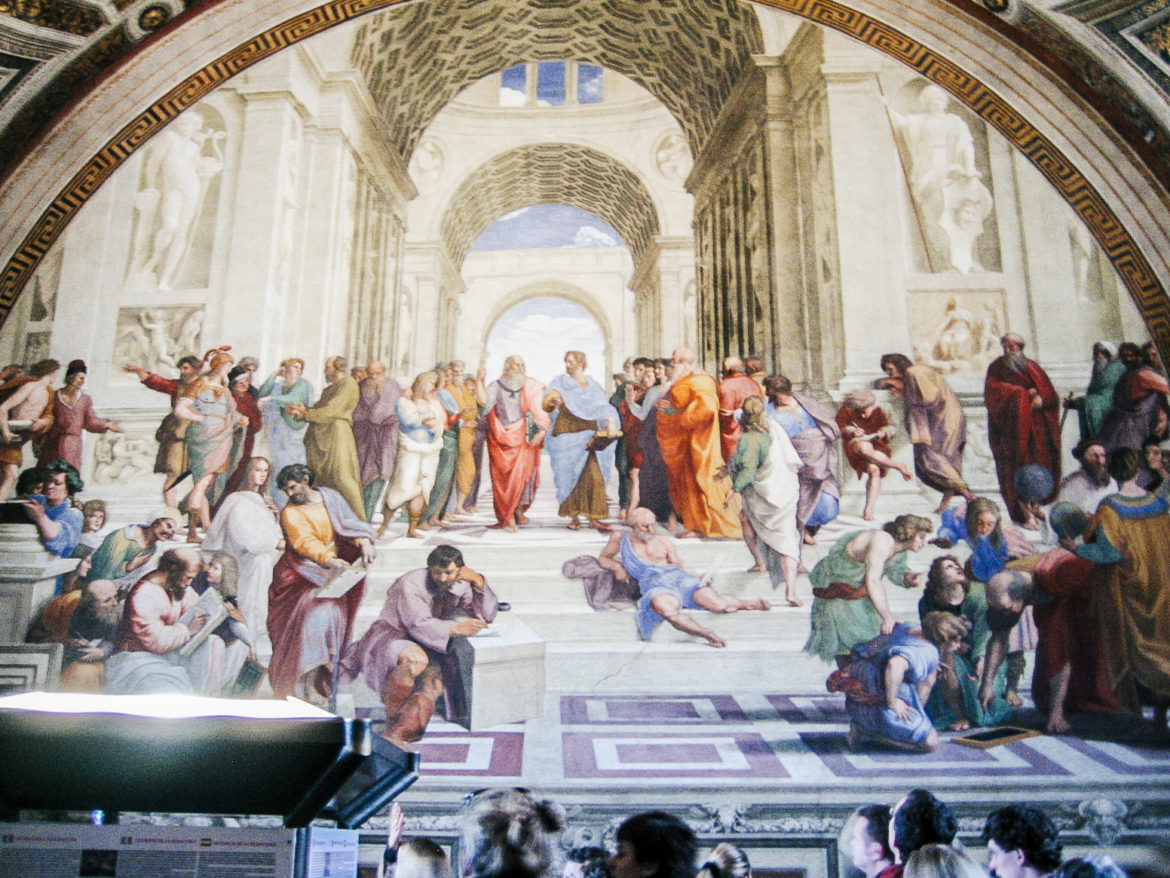Going to the Vatican Museums can easily be considered a form of self-flagellation. For certain, it is not for the faint of heart.
Having failed to make it to the Vatican Museums on our first visit to Vatican City, we tried again the next day. By 8am, there was already a 2 hour wait. Maybe this was reasonable. After all, the Vatican Museums are part of a 463,000 square foot complex. It houses roughly 70,000 works of art collected by Popes over the centuries. Clearly taken aback by the crowds, a Scottish couple tried to rationalize the situation: Was it an obscure holiday? A mid-term school break? No, it was just a typical day.
When we could finally see the entrance, we mistakenly thought it’d be smooth sailing. However, once inside, we witnessed stone-faced individuals transform into manic wild creatures. Chaos ensued as the crowds realized there would be additional security and ticket lines to get through. Some cut in line. Others elbowed their way to the ticket counter. Others frantically tried to locate a tour group to join.
Having secured a ticket, our initial walk through the Vatican Pinacoteca (Art Gallery) seemed promising. Crowds took some semblance of order. For instance, we tolerated one another’s presence as we moved slowly past Renaissance paintings organized chronologically. We saw Rafael’s masterpiece, The Transfiguration, which we’d seen as a mosaic in St. Peter’s Basilica the day prior. Unfortunately, with no English descriptions on any of the artwork, we were forced to come up with our own interpretations. Or eavesdrop on one of the many English-speaking tours nearby.
After that, we moved into a hallway of Roman and Greek sculpture and quickly felt the influx of tourists increasing.
Massive tour groups, bored students and shell-shocked visitors choked the museum rooms. Overly-camera-happy people snapped away, yet took nothing in. Reaching the Raphael Rooms, we could hardly move. Standing should-to-shoulder, we tried not to panic but claustrophobia was setting in. I attempted to focus on the room’s masterpiece: the world famous School of Athens. This gigantic painting features influential philosophers and artists throughout the ages like Socrates, Plato and Michelangelo. Similarly, the experience was bringing to mind some serious philosophical questions of my own: Why did I choose to come here? and Will I get out alive?
Moving at a snail’s pace, the crowds then carried us (quite literally) into the Sistine Chapel. Following a terrifying bottleneck in a narrow hallway, we entered the ornate chapel. Packed like sardines, we stood motionless. Tourists took flash photos and conversed loudly. A woman’s stern voice came on over an intercom reminding guests of the “no photos/no talking” policy. The voice repeated the warning in what seemed like 16 different languages. But it made no difference. People got louder and were more determined to take their blurry, gratuitous, never-to-be-looked-at-again photos.
Just then, a moment of divine intervention. The crowds parted for a second and in the back of the chapel, we spotted two open seats.
We quickly sat, attempting to block out the chaos by looking up. On the ceiling loomed Michelangelo’s The Creation of Adam, the iconic painting of God and Adam touching fingertips. But the painting was soon obscured by a gaggle of video cameras. Like a tsunami wave, a group of Japanese tourists overtook us from our seats, capturing every nano-second of the insanity. We gave up and looked for an exit. We considered visiting the Etruscan Museum, but physically couldn’t make it through the crowds.
Totally exasperated, we tracked down an employee and asked if we could give feedback on our ghastly experience. Unaffected by our traumatic state, he directed us to an information booth. The employee there didn’t seem to understand the concept of feedback. Not only was there no form, there was no way to leave feedback. In any form. And at 4pm, he bean to close down the booth.
Forget escaping Pompeii. We wanted out of Vatican City. Immediately.
Emotionally and physically exhausted, we left The Holy See like weary, defeated soldiers. Back in Rome, we settled into a cozy family-run restaurant. Dining on wood-fire pizza and red table wine, we felt ourselves slowly come back to life. As we recalled the day’s events, we managed to find the humor in the absurdity of it all. And we prided ourselves on something we’d never done on our travels: successfully making it to hell and back.

